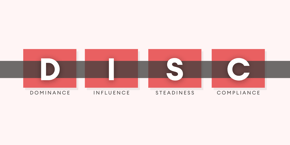What’s holding distributors back?
Across the country, an established distributor is rolling along, comfortable in its success, still relying on what could be considered archaic technology today: a patchwork of solutions, some of which probably haven’t been updated in decades. To implement anything new, it would need to dedicate time, labor and, of course, money.
Few distributors feel like they have time for this, especially if they’re not seeing obvious negative results. The people suffering the most are on the front lines of the company, muddling through workarounds every day.
Not wanting a big disruption, this distributor carries on with its legacy system. After all:
“If it isn’t broke, don’t fix it.”
But here is the thing: When it comes to technology, what’s considered business as usual won’t cut it any longer. It needs to be updated and invested in.
The cost of not upgrading is often steeper than it appears: lost sales lost productivity, and even lost talent. In other words, it’s what you don’t see that might be hurting you most. If you want to compete today, you need to stop following when it comes to technology – and start leading.
Is our history holding us back?
In the not-so-distant past, distributors could get by without modern technology, in part due to a strong reliance on an outside sales team to go to market.
But as technology has advanced, and customers have changed, distributors need better tools to stay competitive and survive in a space with larger-than-life competitors.
Here’s one simple example:
According to Salesforce, 92% of customers currently track their packages, and 58% of customers expect to use that technology more in the next three years. Less than 15 years ago, this information was mysterious to both the supplier and the customer. Now it is an expected part of the customer experience.
Do you offer this feature on your website, and is the data consistent across all of your channels?
This alone represents how our world has changed and how customer expectations have changed with it.
Is running lean pushing technology to the sidelines?
The distribution industry is wrestling with labour issues that are forcing them to run lean, limiting their perceived ability to invest time and money in technology. Point of fact, the US Chamber of Commerce reports that as of August 2022, the labour force participation rate is down to 62%.
But advanced technology, such as artificial intelligence (AI), can help if distributors choose to invest even as they run lean.
Consider this: According to McKinsey, “successfully implementing AI-enabled supply-chain management has enabled early adopters to improve logistics costs by 15%, inventory levels by 35%, and service levels by 65%, compared with slower-moving competitors.”
That, in and of itself, should illustrate the big misses distributors are taking when they put off technology investments today. There is really no excuse anymore.
Widening the gap between you and competitors that are nowhere near upgrading their technology will give you the advantage in this market – even with current recession fears. In fact, I would argue that distributors should invest because of recession fears. What better way to get ahead?
Perhaps most appealing, if you implement technology that leverages AI successfully, you will get a large return versus how much you invest, as software is increasingly more affordable than it was five years ago.
Are distributors missing an opportunity?
Not only have customers’ expectations of transparency increased over the years, but also their expectations of personalization. “The State of the Connected Customer” points out:
- 66% of customers expect companies to understand their needs and expectations
- 62% of customers expect companies to anticipate their needs
- 56% of customers expect offers to always be personalized
It is possible that the absolute best sales team can accomplish these goals, but at what cost? And what scale? How many hours would a sales department need to dedicate to get to know an account so well that they can anticipate their needs and offer personalized suggestions at a moment’s notice? And because this scenario is collected and analyzed manually, how do you know it is correct and there was not a typo to adjust the hours?
When embracing technology, you can give customers the experience they are expecting, faster.
Technology is not a necessary evil.
There is an old saying that the race goes to the swift, but the battles go to the strong. If you are running on old technology, you have a lot of catching up to do to win the race, but that doesn’t mean the battle is over. And while some top distributors may be so far ahead they are out of sight, that’s no excuse to disqualify yourself.
No matter how long you’ve been in business, or what your long-term strategy is, it’s time to invest in technology. And really, given the speed at which the world is changing, you can’t afford not to.
Kevin McGirl is the president and co-founder of sales-i, a leading provider of sales enablement technology.
This article was originally published in here.




.png?width=1080&name=Want%20to%20find%20out%20more%20about%20how%20sales-i%20can%20mix%20your%20hard%20and%20soft%20data%20together%20(2).png)